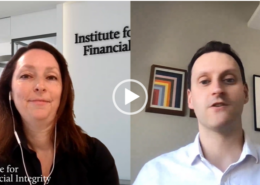Cold Turkey
5 Holiday Frauds and How to Ensure they Don’t Freeze Your Festive Spirit
📅 December 3, 2024
📅 December 3, 2024
Consumer spending over the holiday season is expected to top $1.66 trillion this year in the United States alone. This is an attractive target for frauds which are 12% higher during the holiday period than the rest of the year.
Let’s look at five holiday frauds and how to make sure they don’t spoil your holiday season.
12,000 victims and $73 million in losses occur each holiday season through missed delivery and non-delivery scams in the United States, according to the FBI.
Ordering gifts or supplies for your holiday season celebrations? Missed a package delivery? No problem, you’ve just received a text notifying you that you weren’t at home and giving you a link to click or number to call to reschedule. But before you click or call, stop for a moment!
Missed delivery scams use texts or emails that may appear to be from a legitimate source like Fedex, DHL, UPS, or your postal service. Their objective is to induce you to click a link or call a number to reschedule your delivery or track a delayed item. While they occur all year round, in the holiday season when you’re placing lots of orders online, it can be easier to lose track of which of your purchases has yet to be delivered, or when.
If you click the link or call the number, you may be asked for personal information or to pay a small shipping or other fee to release your “package”. These are all ways to steal your personal and financial information.
How to Spot Fraud:
🔔 Be alert to indicators that the message is a fraud, like spelling mistakes or other errors
🔔 See if the website address looks legitimate – scammers often mimic real websites by using a slight variation in the spelling
🔔 If you get a delayed delivery message, check with the sender or store where you purchased your items to whether your delivery has really been delayed
🔔 Find the legitimate website for the courier or postal service (without using the link in the text or email) and use their tracking option or the customer service phone number on the website to check your delivery status
🔔 Be extra cautious of messages that require urgent action – scammers will try to pressure you to act fast rather than give you time to check
57% of consumers plan to make their holiday purchases online.
With the rise in online shopping all year round, it’s a particularly popular way to do seasonal shopping while avoiding the crowds! This presents an opportunity for fraudsters too.
This scam includes online stores that are designed to look like legitimate stores, as well as those that are entirely fake. These frauds often focus on in-demand or luxury items at deeply discounted prices, targeting shoppers looking for hard-to-find and high-end items on a budget. Some fraudulent online stores are supported by high quality designs and targeted social media advertising.
The objective is to trick consumers into giving up their credit card details and other details for purchases that will never arrive.
How to Spot Fraud:
🔔 Research prices for your item at other legitimate stores: if the price in an online store is significantly discounted, that’s a sign that that the store might be fake
🔔 Use a credit card rather than bank transfer for payment: cards provide more consumer protection than bank transfers
🔔 If a card transaction fails, check the legitimacy of the website before trying again – it may be because the bank’s fraud protection system is stopping a suspicious transaction
The counterfeit goods industry globally is valued at $464 billion and represents 2.5% of global trade.
During the holidays, shoppers looking to make their purchases while meeting their budget may be tempted by discounted items. While there may be legitimate bargains to be found, deep discounts may also be a sign that an item is counterfeit. Almost anything can be counterfeited including consumer products and electronics, luxury items, and gift cards.
Counterfeit items may be sold through well-known sellers’ online marketplaces, whereas for fake online and “lookalike” stores, the entire website or store is fake.
How to Spot Fraud:
🔔 Research prices for your item at legitimate stores – if you see a price online that is significantly discounted, that’s a sign that that the specific item you are looking at might be counterfeit
🔔 Use a credit card rather than bank transfer for payment: cards provide more consumer protection than bank transfers
Gift card scams resulted in consumer losses of $217 million in 2023 in the United States.
Receive a message from your manager or a family member that they need you to buy them some gift cards and read the PIN to them over the phone? Gift card scams occur all year round and come in many variations: repaying a debt to a government agency, threatening to cut off your utilities if you don’t pay what you owe, or saying you’ve won a gift card prize but you just need to pay a small fee. Received the request in a voice or video call so it must be real, right….? With the rise in artificial intelligence deepfakes, you need to be more cautious than ever.
In the holiday season, when our schedules are extra-busy, we may not be quite as vigilant as usual. But gift cards are like cash: they are hard to trace and when the money is gone, it’s gone.
How to Spot Fraud:
🔔 If the request purports to come from someone you know, call them back using a number you already have for them (not the number they contacted you from) to verify the request was really from them
🔔 If the request is supposedly from a government agency or official body it’s a scam – official organizations will never request payment in gift cards
🔔 Offer to pay by credit card instead of a gift card – if they refuse, it’s a scam
In one scam, 76 fake charities were registered to a single post office box.
During the holidays, we may think of others and want to contribute to our community or other charitable causes. Make sure your donation goes to those who really need it rather than a scammer.
Fraudsters seek to take advantage of consumers’ generosity through fake charities, GoFundMes, or other fundraising. These types of scams can be especially difficult to identify because scammers often “spoof” the name of a legitimate charity. This means they use the name of a legitimate charity or a slight variation to make their scam look genuine.
How to Spot Fraud:
🔔 Research the charity and check it is legitimate in your country or state’s charitable register, such as the Better Business Bureau or IRS Tax Exempt Organization Search Tool in the United States or Charities Commission in the United Kingdom
🔔 Make sure you are donating to the legitimate charity – check for signs of fraud on their website like spelling mistakes, poor grammar, or missing contact information
🔔 Take the time you need to make sure the charity is genuine – if you are being pressured to make an immediate donation that’s a sign of fraud, because legitimate charities are happy to get donations at any time
🔔 Avoid giving unnecessary personal information – fraudsters want your personal details as well as your money
Actions to Take
By staying alert to the signs of fraud, you’ll minimize the risk of becoming victim of a scam. But what if it still happens? Take action right away! The actions you’ll need to take will depend on the details of the scam and your jurisdiction and may include:









 Institute for Financial Integrity Unveils AI-Powered Compliance Assistant
Institute for Financial Integrity Unveils AI-Powered Compliance AssistantThis site uses cookies. By continuing to browse the site, you are agreeing to our use of cookies.
Accept settingsHide notification onlySettingsWe may request cookies to be set on your device. We use cookies to let us know when you visit our websites, how you interact with us, to enrich your user experience, and to customize your relationship with our website.
Click on the different category headings to find out more. You can also change some of your preferences. Note that blocking some types of cookies may impact your experience on our websites and the services we are able to offer.
These cookies are strictly necessary to provide you with services available through our website and to use some of its features.
Because these cookies are strictly necessary to deliver the website, refusing them will have impact how our site functions. You always can block or delete cookies by changing your browser settings and force blocking all cookies on this website. But this will always prompt you to accept/refuse cookies when revisiting our site.
We fully respect if you want to refuse cookies but to avoid asking you again and again kindly allow us to store a cookie for that. You are free to opt out any time or opt in for other cookies to get a better experience. If you refuse cookies we will remove all set cookies in our domain.
We provide you with a list of stored cookies on your computer in our domain so you can check what we stored. Due to security reasons we are not able to show or modify cookies from other domains. You can check these in your browser security settings.
These cookies collect information that is used either in aggregate form to help us understand how our website is being used or how effective our marketing campaigns are, or to help us customize our website and application for you in order to enhance your experience.
If you do not want that we track your visit to our site you can disable tracking in your browser here:
We also use different external services like Google Webfonts, Google Maps, and external Video providers. Since these providers may collect personal data like your IP address we allow you to block them here. Please be aware that this might heavily reduce the functionality and appearance of our site. Changes will take effect once you reload the page.
Google Webfont Settings:
Google Map Settings:
Google reCaptcha Settings:
Vimeo and Youtube video embeds:
You can read about our cookies and privacy settings in detail on our Privacy Policy Page.
Privacy Policy